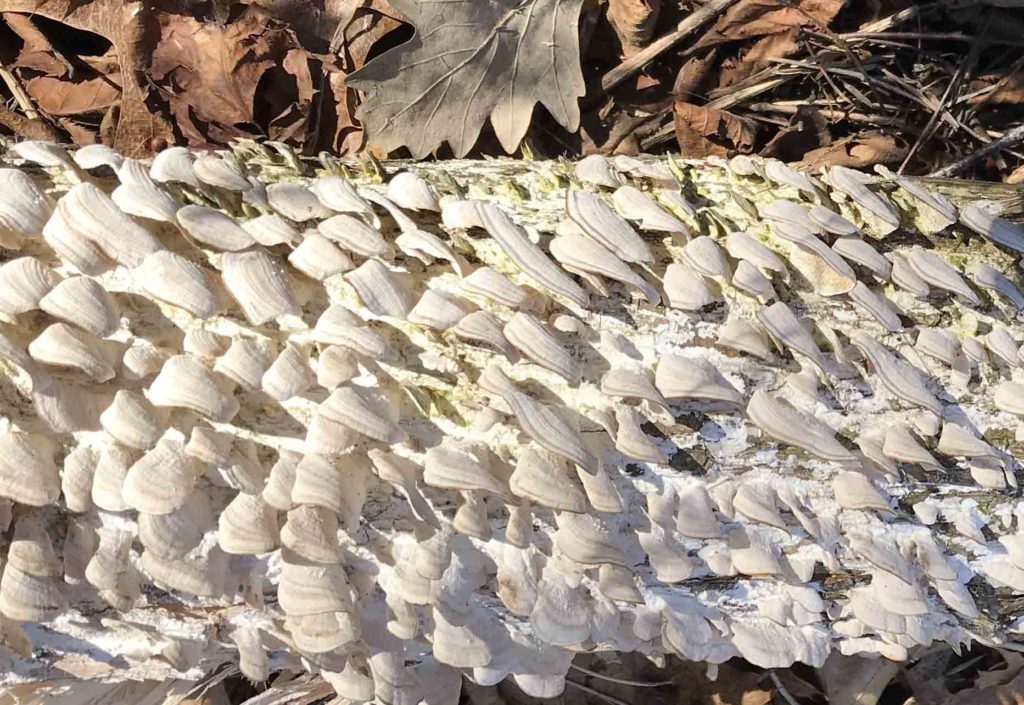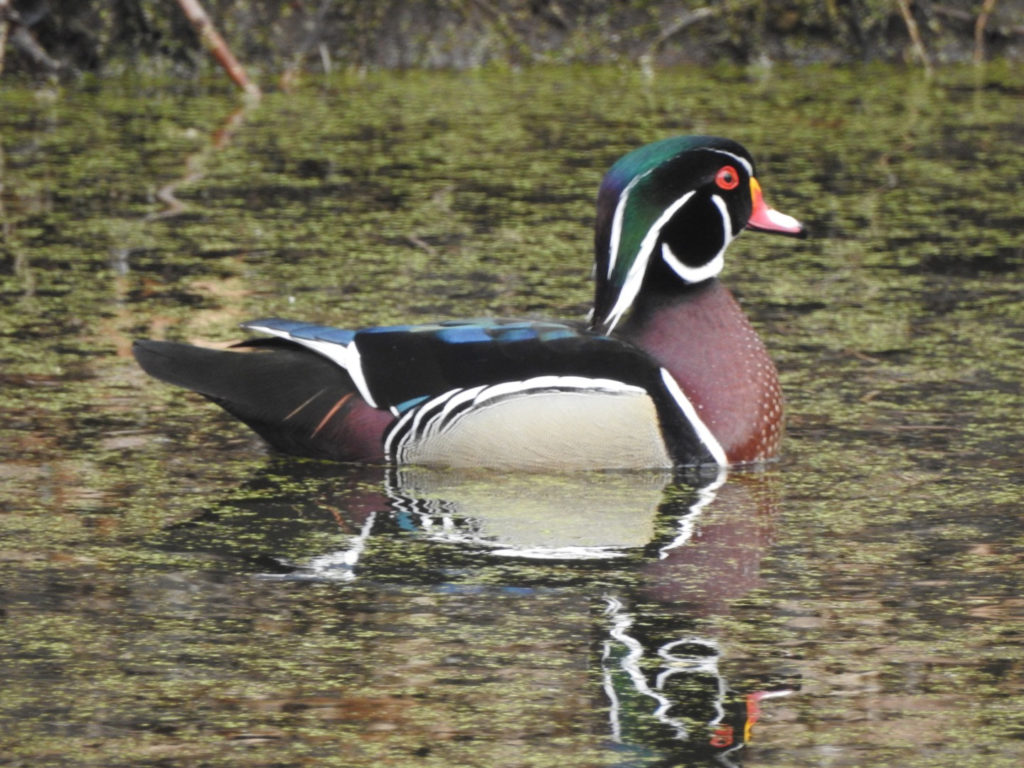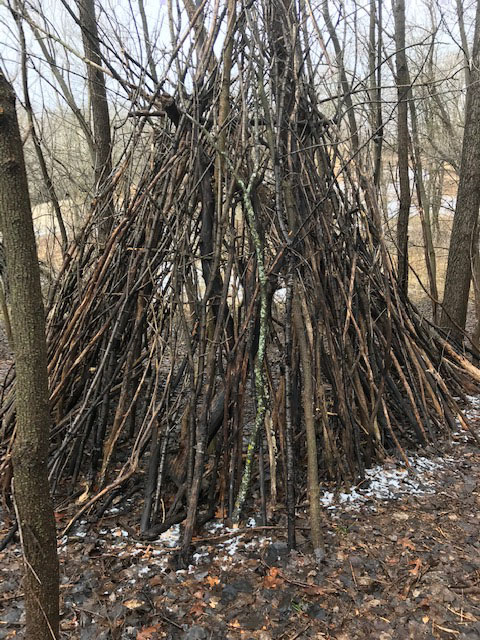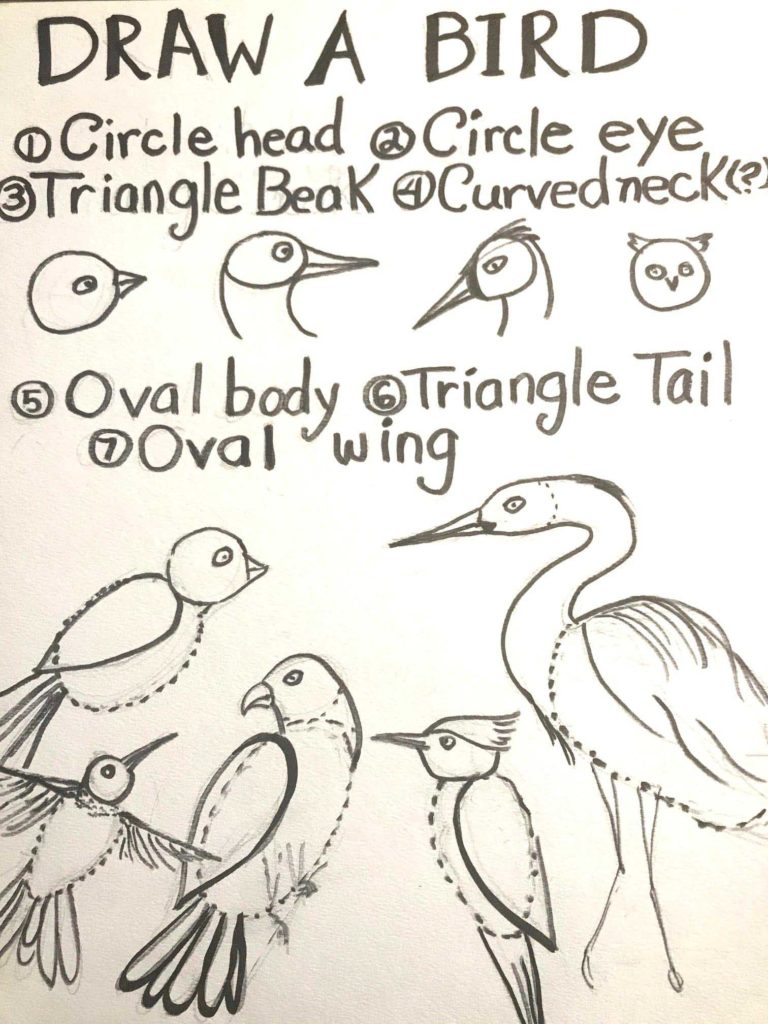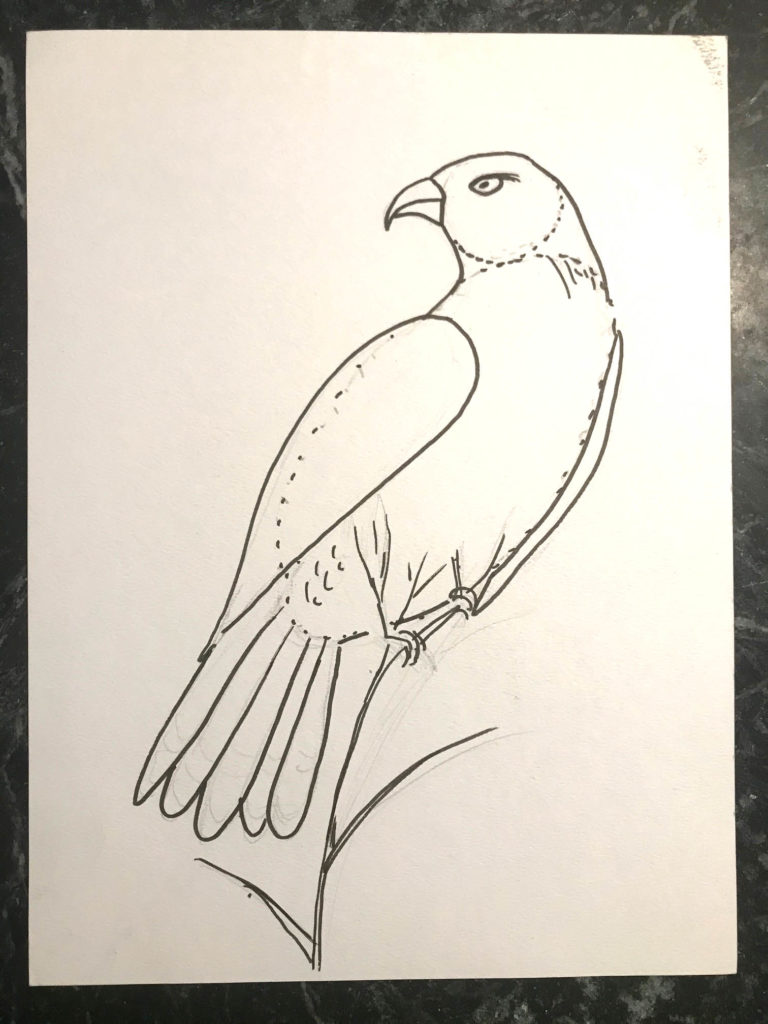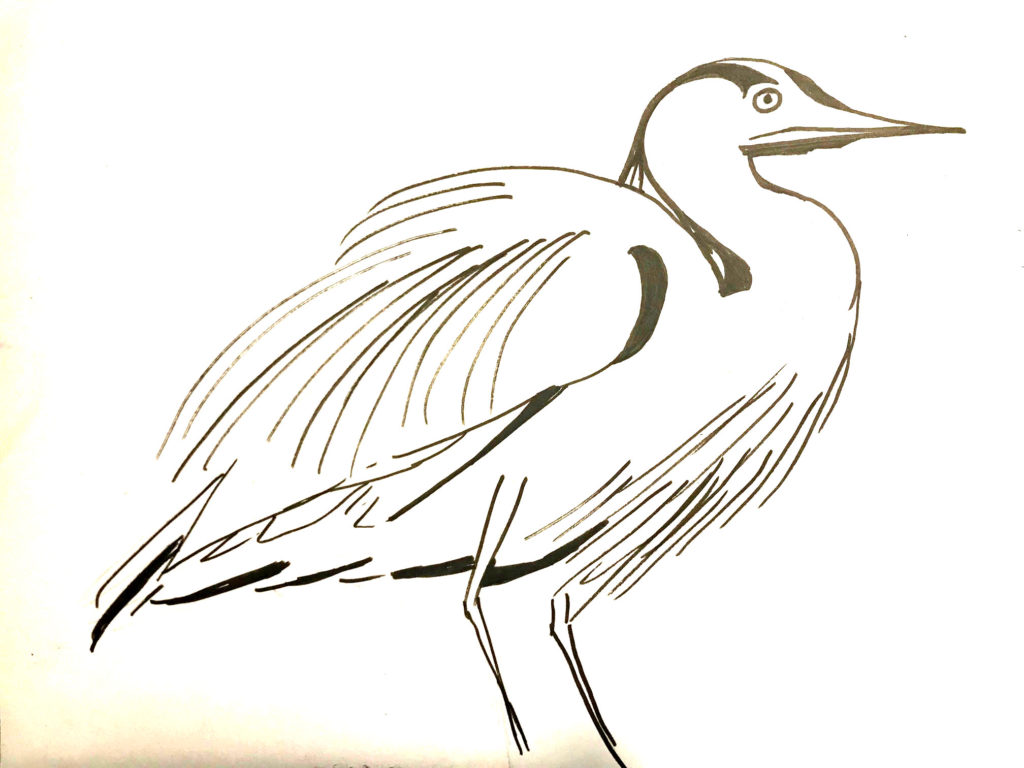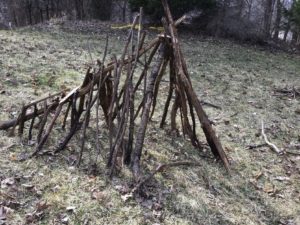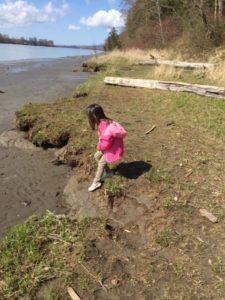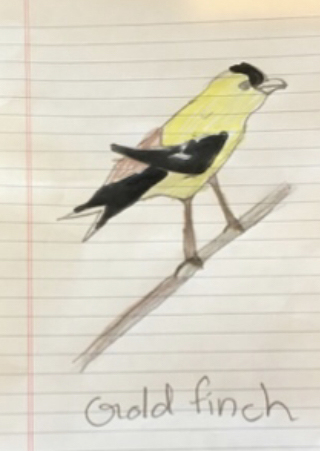Did you miss any of the first three weeks of Nature School? Click here to see links to the previous lessons: Winter Birds, Forests in Early Spring, and Signs of Spring. Also, isn’t it time to make your nature notebook?
If you want to make your own deluxe nature notebook, ArtStart in St. Paul has a creativity kit available for $30 (plus $3 shipping). Go to: http://www.artstart.org/product/creativity-kits/. Scroll down to the Lewis and Clark Expedition. It says it is not available yet, but Carol Sirrine, the owner, says she has the kits ready to go now! When you order, say that you are from the Nature School and request 30 additional pages.
We are continuing to build on our experiences from the previous week and look for new signs of spring. You will have a chance to write a three word poem, build a fort and take a twenty minute hike. Also, guest artist, Karen Anderson, will teach an advanced lesson in drawing birds. Be sure to share a nature note, a poem, a photo, or something you experienced at the bottom of the post.
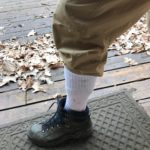
Safety Alert: With the warmer weather, ticks are active. Stay on walking paths. Do not walk on deer trails. You can wear shorts or pants. If you choose to wear pants, pull your socks over the pant leg so you can see if ticks are crawling up your leg. Do frequent tick checks. At home, do a thorough tick check.
Thanks to Mark Storck, Janine Pung, Karen Anderson, Stephen Bolles, Cindy Eyden, Heather Holm, Ron Spinosa and Carol Wade for contributing to Nature School this week.
1. Nature Sounds
Early Spring is a great time to learn different sounds that creatures are making in our forests and ponds. Naturalists, Heather Holm and Cindy Eyden sent the following nature sounds:
Chorus Frogs
Chorus Frogs and the “clucking” of Wood Frogs – See if you can tell the two frogs apart.
What to Do:
a. Using your phone, Ipad or tape recorder, record sounds that you hear while you are on your nature hikes. Try to identify the creature who is making each sound. Send the “Old Naturalist” the recording if you are not sure what it is.
2. Bird Beaks as Tools
An adaptation is a specialization of an animal’s body to help it survive. A bird’s beak is an adaptation to help it catch or eat food. In many ways, the beak is like a tool.
What to do:
a. Download and print the page ( see link below)
a. Using the list below match the tool description to each bird beak. Write the name of the tool beneath the picture. After you complete the page, put it in your nature notebook.
b.During the week, observe the beaks of birds you see. Write down your observations in your nature notebook.
Tool Descriptions:
Pliers Beak – Stout and pointed for digging up insects in the ground.
Insect Net Beak – A small beak that can open wide to grab flying bugs.
Spearing Beak – Long, slim, strong and pointed for spearing fish and frogs.
Nut-cracking Beak – Thick and stout beak for cracking seeds.
Straining Beak – Comb-like strainers to filter out bits of food in the water.
Chisel Beak – A stout beak that is used to chisel into wood.
Knife Beak – Sharp and hooked for tearing flesh.
Straw Beak – A long and thin beak for sucking nectar from flowers.
To download and print the page below: click here. Put the page in your nature notebook.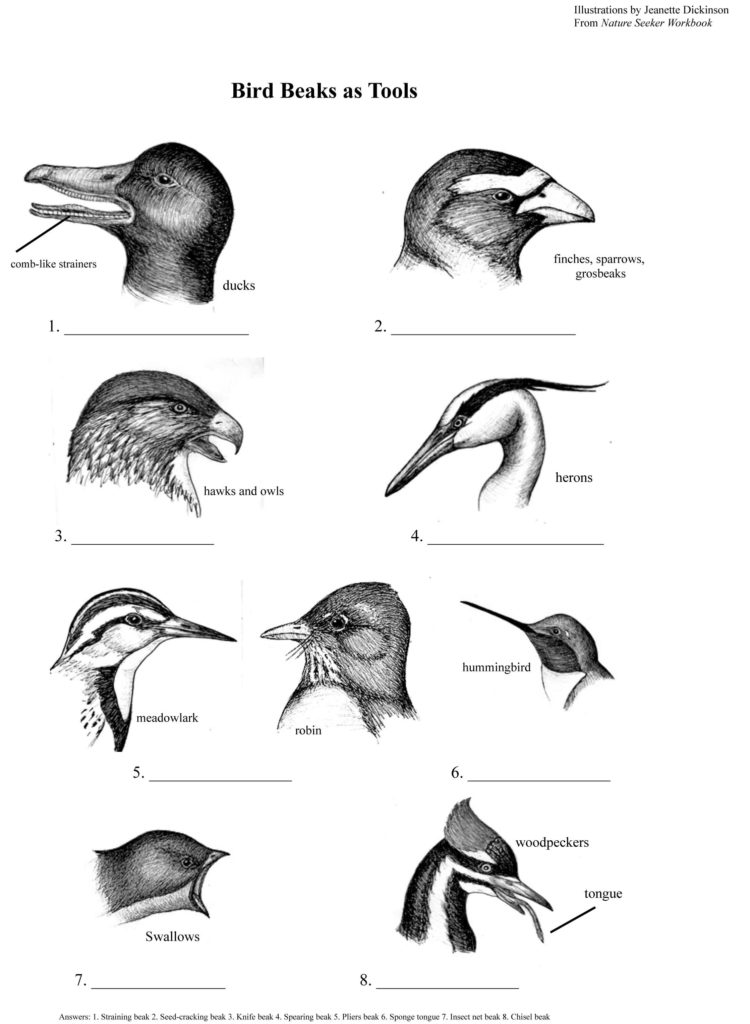
3. Three Word Poem
What to Do:
a. Take five, calming breaths. Breathe in through your nose and out through your mouth.
b. Walk slowly for 2-3 minutes on a forest or wetland trail. Listen and look.
c. Stop and write 2-4 words that describe what you experienced or felt. This will be the first line of your poem.
d. Now you are ready to start your second line. Repeat (b) and (c) at least three times.
Example:
I feel the wind
Chickadees in trees
Woodpecker drumming
I feel connected
4. Twenty Minute Hike
Turn Around Hike
a. Take five, calming breaths. Breathe in through your nose and out through your mouth.
b. Walk slowly for five minutes on a forest or wetland trail observing nature.
c. Then turn around and go back the same way you came.
d. Write 10 new things you did not see/hear (before you turned around) in your nature notebook.
5. The Importance of Forts
Crawling into a fort gives a person a sense of place and safety in the world. There is also the creative aspect of building something and having the satisfaction when it is done. If you have no sticks, look for a special place in the forest, such as under an old tree, or near a river. If you can’t get outside, you can always build a fort in your home.
Rules of fort building
- Don’t build a fort on private or public property unless you get permission.
- When you are done using the fort, take it apart and make it look like it was never there.
- If it is a ground fort, make sure that no creature moved in during the night (like a skunk or rattlesnake).
- Don’t put nails in trees when building tree houses.
6. Draw a Bird – Advanced Lesson
To download and print “Draw a Bird” (below): click here.
For the third straight week, artist Karen Anderson shares her creativity with Nature School students. Last week, Karen demonstrated the basics of Drawing Birds.
What to do:
a. Review the basics of drawing birds by using Karen’s handout, “Draw a Bird” (see below).
b. Karen also shows you how to draw a loon, hawk, and a heron. Choose at least one of these birds and draw it in your nature notebook.
To download and print “Draw a Loon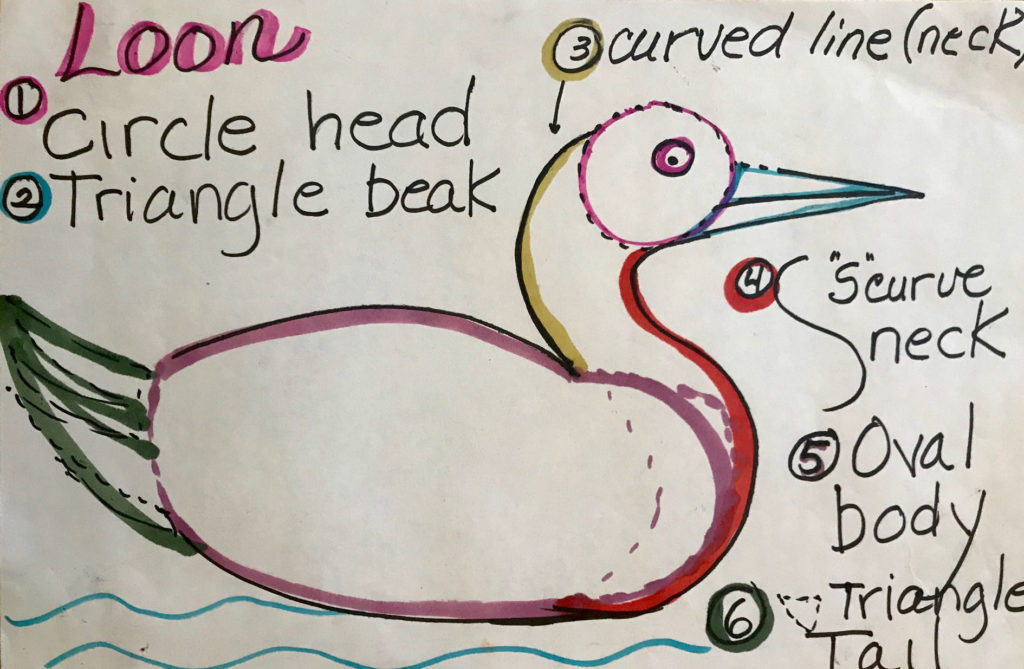 ” (below): click here.
” (below): click here.
To download and print “Draw a hawk” (below): click here.
To download and print “Draw a Heron” (below): click here.
Readers Share Their Experiences
Thanks for you three weeks of exceptional resources. Our students are making a nature notebook tomorrow and then we will be adding to it once or twice a week through the spring. Here is what our sample looks like…..
https://read.bookcreator.com/h4j5SeCzyEapB6d1bG7jCbwuSif2/GwxJPdWmRfyywZX8saV56Q
We know it’s not a notebook, but some kids don’t have notebooks, but they all have an ipad with a camera. Good stuff. I really like the audio of the different birds on you site too. Kate Humphrey, 4th grade teacher,Glen Lake Elementary
We love your nature school. On our nature walk we saw an amphibian that we have not yet identified. We also heard the chorus and wood frogs in a nearby pond! Thanks! Angela and Lillian (age 5).
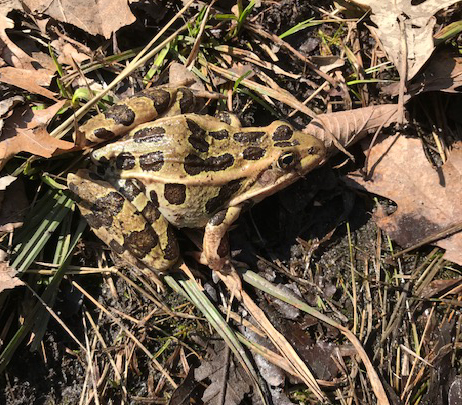
Note: That is a Leopard frog. Angela said that the frog was very docile and did not move. The leopard frog probably had just come out of hibernation.
My sons are avid birders so they absolutely loved the naturalist classes this week. Annie Wilde Barron
We were wandering along a bank of the Fraser River and identifying birds by sight and by their calls..Hazel and her mother, British Columbia
 Mr. Wade thank you so much for this nature space to share. It has been great for my heart and soul to get outside and witness the magic of nature during this spring. I noticed the rhubarb plants up by our house yesterday were enjoying the warmth and starting to grow. Rhubarb jam! I can’t wait. Brent Frank, Minnetonka
Mr. Wade thank you so much for this nature space to share. It has been great for my heart and soul to get outside and witness the magic of nature during this spring. I noticed the rhubarb plants up by our house yesterday were enjoying the warmth and starting to grow. Rhubarb jam! I can’t wait. Brent Frank, Minnetonka

